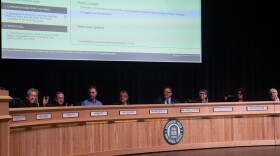A new mural honoring deported veterans was unveiled Saturday in Barrio Logan.
Veterans who were convicted of crimes but do not have U.S. citizenship are often deported back to their native country. Such was the case for Laura Meza, who was deported to Costa Rica in 2009 after serving in the U.S. Army.
She is one of the many faces portrayed on the Leave No One Behind Mural Project.
The mural can be seen outside of the Don Diego Veterans of Foreign Wars Post in Barrio Logan.
“Who is being left behind? Laura Meza and dozens of deported veterans just like her who continue to be deported right now as we speak,” Jennica Tamayo, an Air Force veteran said.
Tamayo shared about her battle with post-traumatic stress disorder (PTSD), a story that parallels Meza’s.
Meza was self-medicating for her PTSD was deported for possession of cannabis and attempted robbery.
As a U.S. citizen, Tamayo was able to get the help she needed to overcome PTSD, but those suffering in silence sometimes never get the help they need.
“Veterans are often suffering from PTSD. Sometimes that results in them committing some sort of crime that gets them deported,” Dulce Garcia, the executive director of Border Angels said.
She’s worked with deported vets who aren't able to come back to the U.S. due to immigration policy for service members.
Things may be changing as the Biden Administration has promised to provide a pathway to citizenship for vets.
The Department of Homeland Security will evaluate if crimes committed by veterans had a correlation to PTSD due to military service.
"Sounds like a long process. It’s going to be case-by-case and that’s why they needed to get started yesterday," Garcia said. "It’s a long process to bring everybody back."
There's a QR code on the Leave No One Behind mural. The public can scan the code with their smartphones and learn about each person depicted on it.






